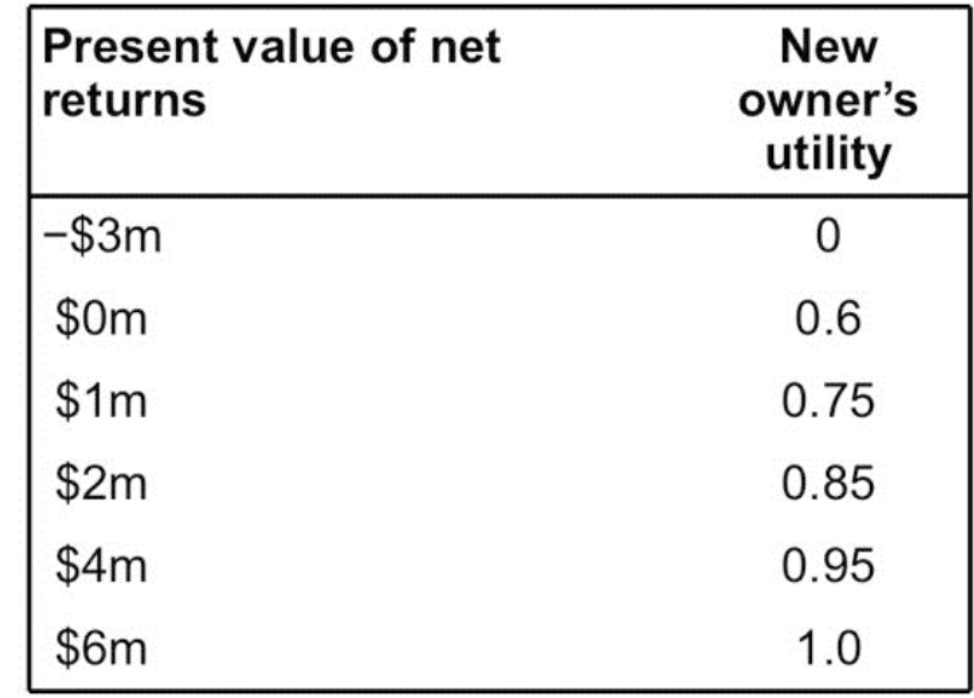A company has to decide whether to invest money in the development of a microbiological product. The company’s research director has estimated that there is a 60% chance that a successful development could be achieved in 2 years. However, if the product had not been successfully developed at the end of this period, the company would abandon the project, which would lead to a loss in present-value terms of $3 million. In the event of a successful development, a decision would have to be made on the scale of production. The returns generated would depend on the level of sales which could be achieved over the period of the product’s life. For simplicity, these have been categorized as either high or low. If the company opted for large-volume production and high sales were achieved, then net returns with a present-value of $6 million would be obtained. However, large-scale production followed by low sales would lead to net returns with a present value of only $1 million. In contrast, if the company decided to invest only in small-scale production facilities then high sales would generate net returns with a present value of $4 million and low sales would generate net returns with a present value of $2 million. The company’s marketing manager estimates that there is a 75% chance that high sales could be achieved. a) Construct a decision tree to represent the company’s decision problem b) Assuming that the company’s objective is to maximise its expected returns, determine the policy that it should adopt. c) There is some debate in the company about the probability that was estimated by the research director. Assuming that all other elements of the problem remain the same, determine how low this probability would have to be before the option of not developing the product should be chosen. d) Before the final decision is made the company is taken over by a new owner, who has the utilities shown below for the sums of money involved in the decision. (The owner has no interest in other attributes which may be associated with the decision, such as developing a prestige product or maintaining employment.) What implications does this have for the policy that you identified in (b) and why
A company has to decide whether to invest money in the development of a microbiological product. The company’s research director has estimated that there is a 60% chance that a successful development could be achieved in 2 years. However, if the product had not been successfully developed at the end of this period, the company would abandon the project, which would lead to a loss in present-value terms of $3 million. In the event of a successful development, a decision would have to be made on the scale of production. The returns generated would depend on the level of sales which could be achieved over the period of the product’s life. For simplicity, these have been categorized as either high or low. If the company opted for large-volume production and high sales were achieved, then net returns with a present-value of $6 million would be obtained. However, large-scale production followed by low sales would lead to net returns with a present value of only $1 million.
In contrast, if the company decided to invest only in small-scale production facilities then high sales would generate net returns with a present value of $4 million and low sales would generate net returns with a present value of $2 million. The company’s marketing manager estimates that there is a 75% chance that high sales could be achieved.
a) Construct a decision tree to represent the company’s decision problem
b) Assuming that the company’s objective is to maximise its expected returns, determine the policy that it should adopt.
c) There is some debate in the company about the probability that was estimated by the research director. Assuming that all other elements of the problem remain the same, determine how low this probability would have to be before the option of not developing the product should be chosen.
d) Before the final decision is made the company is taken over by a new owner, who has the utilities shown below for the sums of money involved in the decision. (The owner has no interest in other attributes which may be associated with the decision, such as developing a prestige product or maintaining employment.) What implications does this have for the policy that you identified in (b) and why

Trending now
This is a popular solution!
Step by step
Solved in 5 steps




